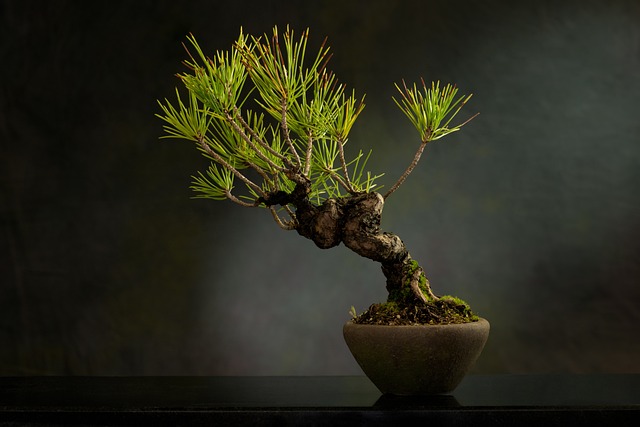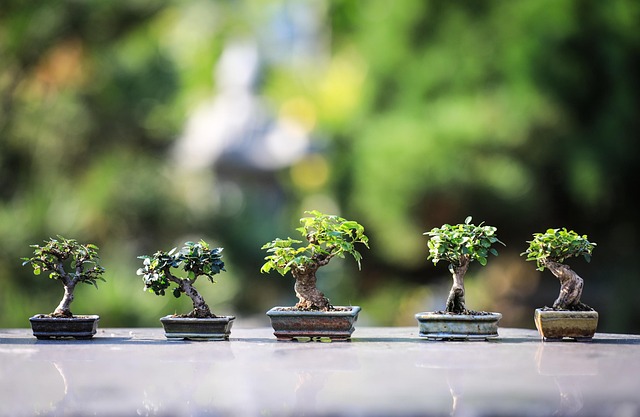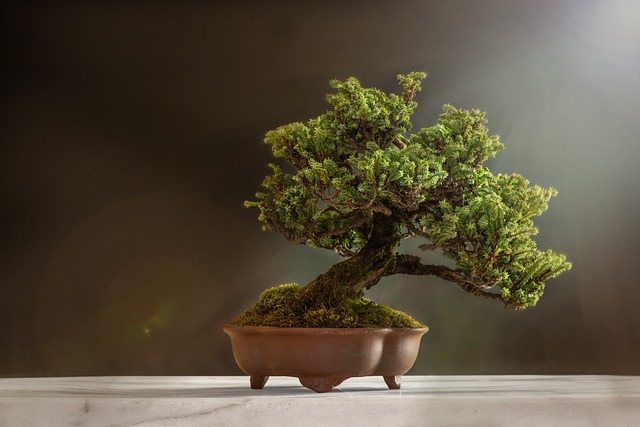Welcome to the enchanting world of Japanese bonsai, where ancient artistry meets modern passion. This comprehensive guide will introduce you to the fundamentals of bonsai cultivation, drawing from centuries of Japanese wisdom and tradition. Whether you’re completely new to this art form or looking to deepen your understanding, you’ll discover everything needed to begin your own miniature tree journey.
From selecting your first tree to mastering basic care techniques, this guide provides practical steps and time-tested Japanese methods that will set you on the path to success.
- What is Bonsai? The Art from Japan
- Quick Answer: How to Start Bonsai as a Beginner
- Brief History of Bonsai in Japan
- Essential Bonsai Styles for Beginners
- Choosing Your First Bonsai Tree
- Basic Tools You’ll Need
- Soil and Potting Basics
- Placement and Environment
- Watering Your Bonsai
- Fertilizing Guidelines
- Basic Pruning and Shaping
- Repotting Your Bonsai
- Common Beginner Mistakes to Avoid
- Summary
What is Bonsai? The Art from Japan
Bonsai (盆栽) literally translates to “planted in a container” in Japanese. However, this simple definition barely scratches the surface of this profound art form. Bonsai represents the harmony between nature and human creativity, where miniature trees are carefully cultivated to mirror the beauty and essence of their full-sized counterparts in nature.
Originating from the Chinese practice of penjing over a thousand years ago, bonsai was introduced to Japan during the Heian period (794-1185). The Japanese refined this art, developing their own aesthetic principles that emphasize simplicity, balance, and natural beauty.
Quick Answer: How to Start Bonsai as a Beginner

The most important first steps for beginners:
- Choose a beginner-friendly species like Ficus, Juniper, or Japanese Maple
- Start with a young tree from a nursery rather than seeds
- Invest in basic tools: pruning shears, concave cutters, and wire
- Learn proper watering techniques – the most critical skill
- Find the right location with adequate light and air circulation
- Practice patience – bonsai is a long-term commitment
Remember: successful bonsai cultivation is about understanding your tree’s needs rather than following rigid schedules.
Brief History of Bonsai in Japan
The journey of bonsai in Japan reflects the country’s deep connection with nature and artistic refinement. During the Kamakura period (1185-1333), Japanese monks and aristocrats began practicing this art as a form of meditation and aesthetic expression.
The Edo period (1603-1867) marked bonsai’s democratization, when it spread from the elite to common people. This era saw the development of many techniques still used today, including advanced pruning methods and specialized tools.
In the modern era, Japanese bonsai masters like Masahiko Kimura and Kunio Kobayashi have elevated the art to new heights, inspiring practitioners worldwide while maintaining traditional principles.
Essential Bonsai Styles for Beginners

Understanding basic bonsai styles helps beginners choose appropriate trees and develop their aesthetic sense. Here are the fundamental styles every beginner should know:
| Style | Japanese Name | Description | Best for Beginners |
|---|---|---|---|
| Formal Upright | Chokkan | Straight, tapering trunk | Yes – Very stable |
| Informal Upright | Moyogi | Curved trunk, natural look | Yes – Most common |
| Slanting | Shakan | Tree leans to one side | Moderate difficulty |
| Cascade | Kengai | Branches flow downward | Advanced only |
| Semi-Cascade | Han-Kengai | Partially drooping branches | Moderate difficulty |
Choosing Your First Bonsai Tree
Indoor vs Outdoor Bonsai
Indoor bonsai are typically tropical or subtropical species that can tolerate lower light and stable temperatures. Popular choices include:
- Ficus species – Extremely forgiving and fast-growing
- Chinese Elm – Adaptable with small leaves
- Jade Plant – Succulent nature makes it drought-tolerant
Outdoor bonsai offer more species variety and often display more dramatic seasonal changes:
- Japanese Maple – Stunning autumn colors
- Juniper – Classic evergreen choice
- Pine species – Traditional and long-lived
Best Beginner-Friendly Species
For your first bonsai, consider these tried-and-tested beginner species:
- Ficus Benjamina – Tolerates mistakes and recovers quickly
- Juniper Procumbens – Hardy and responds well to pruning
- Chinese Elm – Fast growth and small leaves
- Serissa Foetida – Produces small white flowers
- Japanese Maple – Offers seasonal beauty and variety
Basic Tools You’ll Need

Essential tools for beginners:
- Pruning Shears – For cutting small branches and leaves
- Concave Cutters – Creates clean cuts that heal properly
- Wire Cutters – For training and shaping branches
- Root Rake – For repotting and root work
- Watering Can with Fine Nozzle – Gentle watering control
Quality Japanese tools last longer and provide better results, but beginners can start with affordable options and upgrade gradually.
Soil and Potting Basics
Choosing the Right Soil Mix
Proper soil composition is crucial for bonsai health. Unlike regular potting soil, bonsai soil must provide:
- Excellent drainage to prevent root rot
- Good aeration for healthy root development
- Appropriate water retention without becoming soggy
Traditional Japanese soil components:
- Akadama – Clay granules that retain moisture
- Pumice – Provides drainage and aeration
- Lava Rock – Improves soil structure
Selecting Proper Containers
Bonsai pot selection follows specific principles:
- Depth should equal the trunk’s diameter
- Length should be approximately 2/3 the tree’s height
- Drainage holes are absolutely essential
- Color and style should complement, not compete with the tree
Placement and Environment
Location significantly impacts your bonsai’s health and development:
For Outdoor Bonsai:
- Morning sunlight with afternoon shade
- Protection from strong winds
- Good air circulation without drafts
- Easy access for daily care
For Indoor Bonsai:
- Bright, indirect light or grow lights
- Away from heating/cooling vents
- Humidity trays to increase moisture
- Rotation for even growth
Watering Your Bonsai
Watering technique is the most critical skill for bonsai success. The finger test remains the most reliable method:
- Insert your finger 1-2 inches into the soil
- If dry, water thoroughly until it runs from drainage holes
- If moist, wait and check again later
Key watering principles:
- Water thoroughly but not frequently
- Morning watering is generally best
- Adjust frequency based on season and weather
- Use lukewarm water to avoid shock
Fertilizing Guidelines
Proper nutrition supports healthy growth and development:
Growing Season (Spring/Summer):
- Weekly liquid fertilizer at half strength
- Balanced NPK ratio (10-10-10 or similar)
- Organic options like fish emulsion work well
Dormant Season (Fall/Winter):
- Reduce frequency to monthly or stop entirely
- Lower nitrogen content to prevent soft growth
Basic Pruning and Shaping

Pruning serves multiple purposes:
- Maintains size and proportions
- Encourages branch development
- Removes dead or unwanted growth
- Shapes the overall design
Pruning techniques:
- Structural pruning – Remove large branches
- Maintenance pruning – Trim back new growth
- Pinching – Remove soft new growth tips
- Leaf pruning – Advanced technique for leaf reduction
Repotting Your Bonsai
Repotting frequency depends on:
- Tree age – Younger trees need more frequent repotting
- Growth rate – Fast growers need annual repotting
- Root development – When roots circle the pot
Best timing: Early spring before new growth begins
Repotting process:
- Remove tree from pot carefully
- Trim 1/3 of root mass
- Clean and prepare new soil
- Replant with fresh soil mixture
- Water thoroughly and place in shade
Common Beginner Mistakes to Avoid
Overwatering – The number one killer of bonsai trees
Inadequate light – Especially for indoor bonsai
Overfertilizing – Can cause excessive, weak growth
Impatience – Rushing styling before the tree is ready
Wrong tools – Using inappropriate cutting implements
Ignoring seasons – Not adjusting care throughout the year
Summary
Beginning your bonsai journey is an investment in patience, learning, and artistic growth. This ancient Japanese art form offers profound rewards for those willing to dedicate time and attention to their miniature trees.
Remember that every bonsai master was once a beginner. Start with hardy, forgiving species, focus on mastering basic care techniques, and gradually expand your knowledge and collection. The path of bonsai is not about perfection but about the continuous journey of growth – both for your trees and yourself.
Your miniature tree journey begins now – embrace the process, learn from mistakes, and enjoy the meditative beauty of this timeless art form from Japan.


